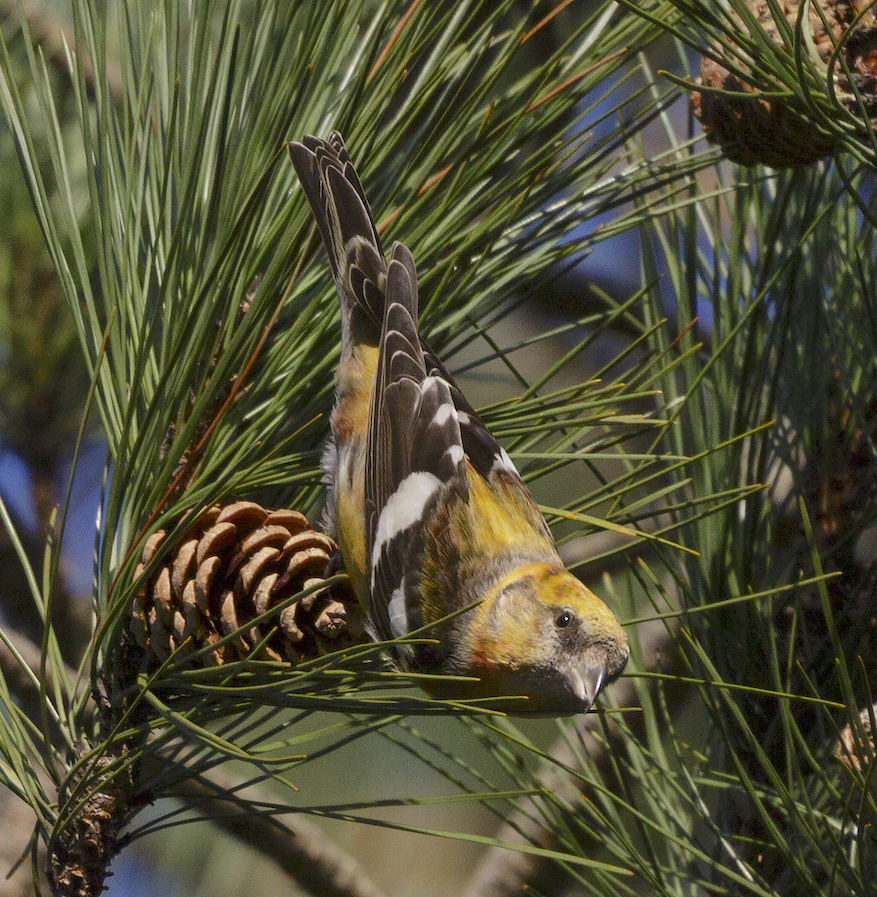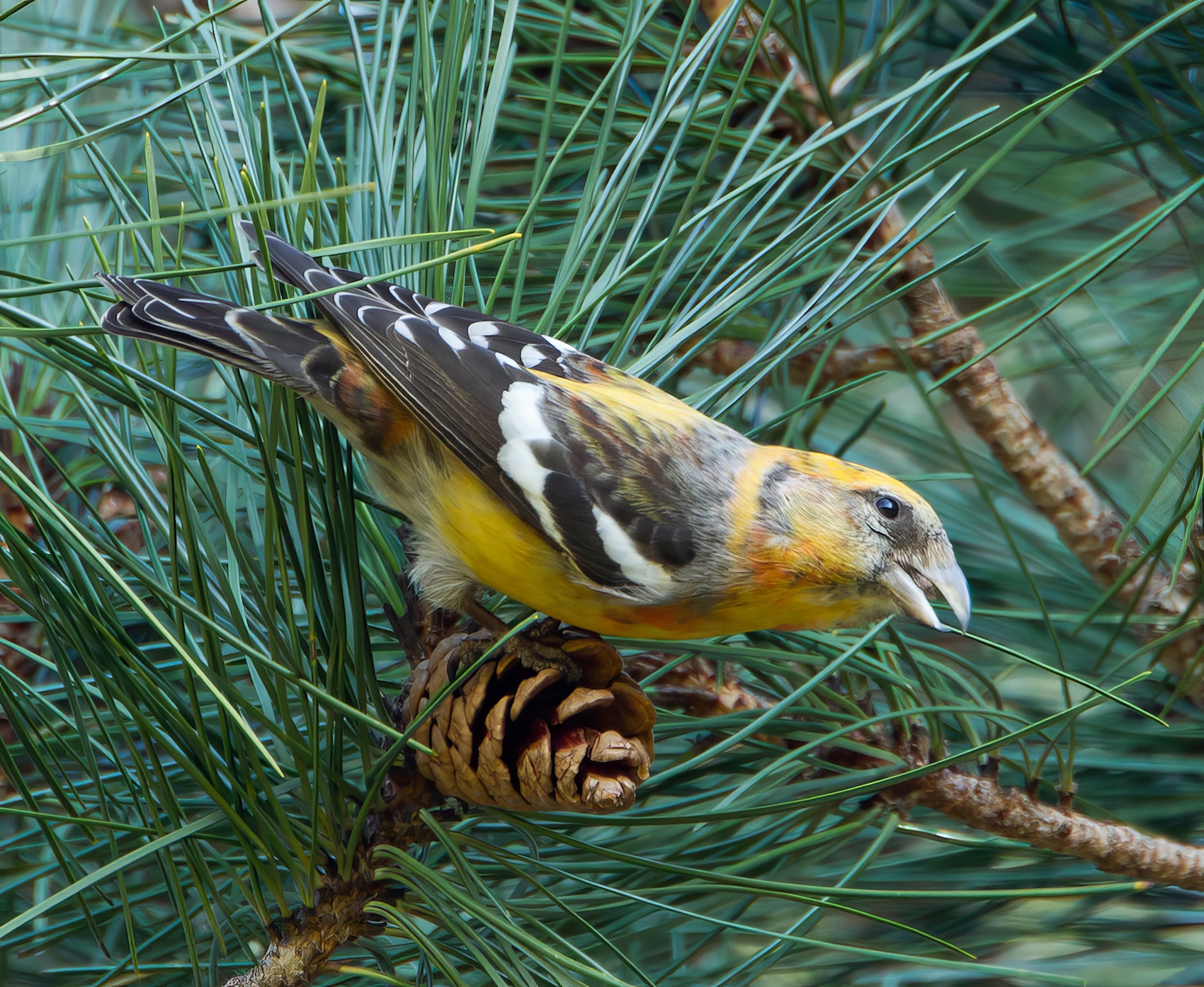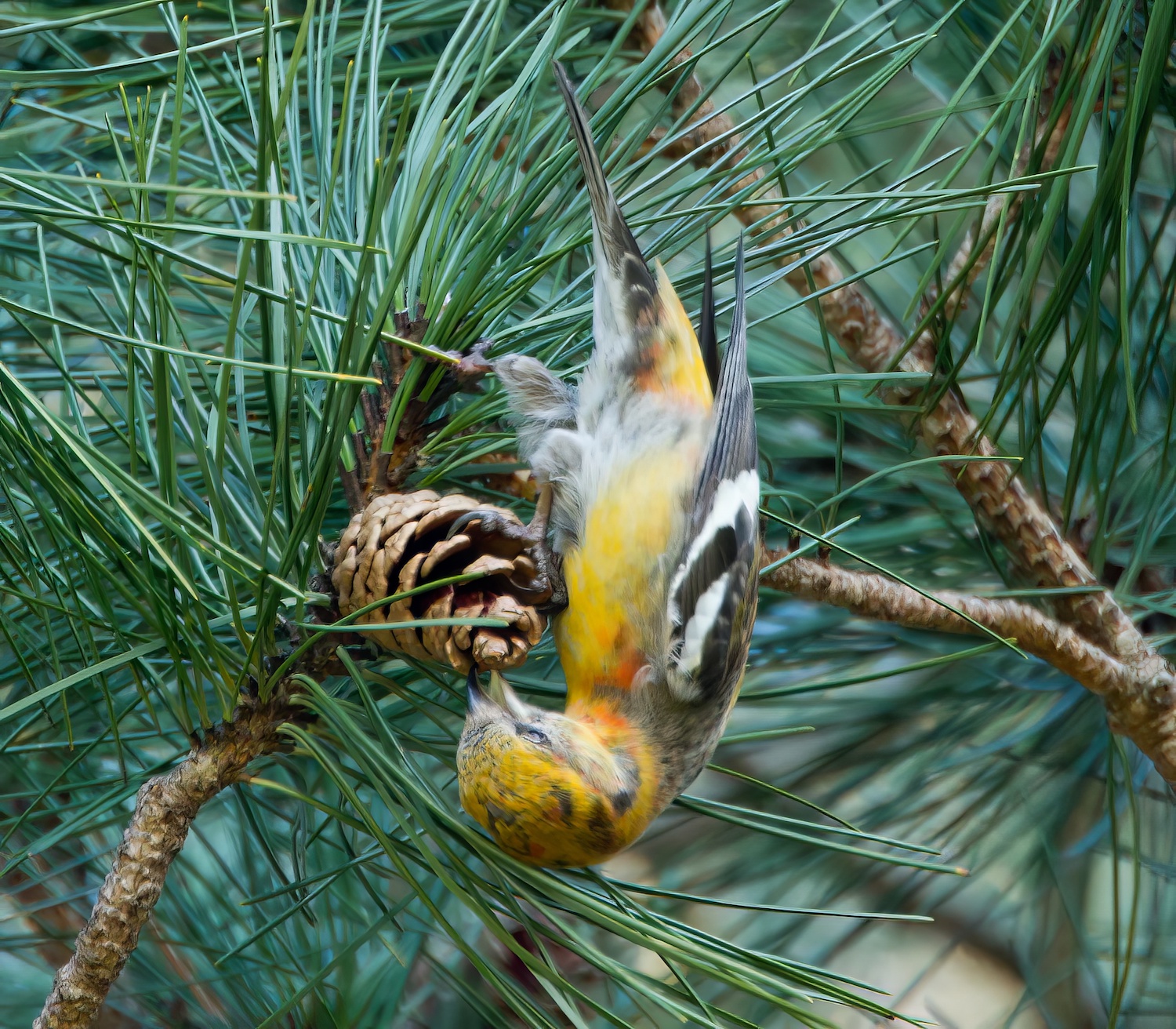Two-barred Crossbill Loxia leucoptera



There were invasions of this species to the UK in the winters of 1845-46 and 1890-91. A review was carried out by the BOURC (2007) which resulted in all records prior to November 1st 1845 being rejected for varying reasons. Accordingly the first for Britain was determined to have been a female on November 1st 1845 at Cambeckhill Woods, near Brampton, Cumbria. This was the first specimen from an invasion with subsequent reports of birds at several localities throughout the UK to April 1846 at least. In Lincolnshire it has been located only twice. The first was in September 1889 shot at South Cockerington near Louth, one of only 71 British records prior to 1950 and reported by Cordeaux (1891):
"A very handsome adult male in my possession was shot at South Cockerington, near Louth, in the autumn of the same year (1890) and illustrated in Lord Lilford's 'Coloured figures of the Birds of the British Islands, part xix."
Since then there have been a further 533 in Britain up to 2019 but only one in Lincolnshire, when a male was discovered by Chris Heaton and Mark Johnson at Forest Pines Golf Course near Broughton on February 9th and stayed with a flock of up to 22 Crossbills L. curvirostra through to March 21st. It was part of an invasion of 101 birds that had arrived during the second half of 2013 and dispersed across the country. In general, these invasions occur during June-August beginning in the Northern Isles with most birds recorded in Shetland and a few filtering down into mainland Britain and in some cases wintering, like the Forest Pines bird in 2014. Other large invasions to Britain in recent years included 59 in 2008 and a massive 219 in 2019 but sadly there were no reports from Lincolnshire in these invasion years. The dearth of extensive larch forests in particular and associated Crossbills compared to nearby Norfolk and Yorkshire probably accounts for the unattractiveness of the county for this species.
| Site | First date | Last date | Count | Notes |
| South Cockerington | September 1889 | - | 1 | Adult male, shot |
| Forest Pines GC, Broughton | 09/02/2014 | 21/03/2014 | 1 | Male with Common Crossbills |
Two-barred Crossbill at Forest Pines, Broughton, February 9th 2014, second county record, with notes on aging the species.
by G. P. Catley.
The large invasion of Two-barred Crossbills in 2014 gave food for thought over the aging of these birds. le is listed by BBRC as an adult (without specifying sex) and the following summary was provided by Graham Catley.
The bird appeared to have reflaced all of its greater and median coverts judging by the width of the white tips, and also all of its tertials and flight feathers which appeared blackish rather than worn and brown toned, as they would be if they were juvenile feathers. The tips of the primaries and secondaries also appeared fresh and not abraded; the lower scapulars were largely black-centred. The orange colour of the body feathers was mixed with patches of red, quite similar to two of the Broomhead, Sheffield, birds, but they seemed to show more red and less orange in their body plumage; those birds were considered to be the juveniles that arrived there the previous autumn so it seems logical that the Broughton bird was indeed a first summer (2CY) male but one that had undergone a rather more extensive moult than described in BWP.
Reference
British Ornithologists’ Union Records Committee (2007). 34th Report (2006). Ibis 149: 194-197.
Cordeaux, J. (1891). Rare British birds in the Humber district. The Zoologist, third series, vol. 15: 361-367.
(Updated with reference to the new Birds of Lincolnshire (2021) January 2023)

